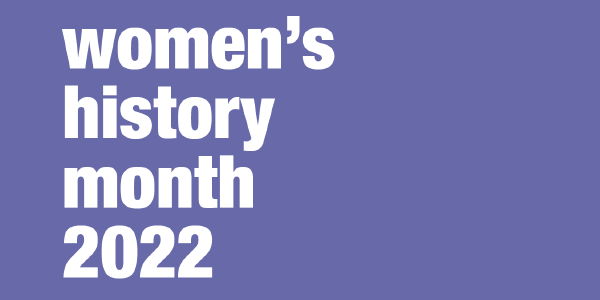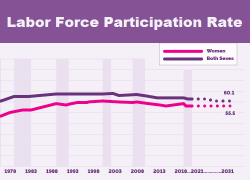
At the Labor Department, we like to brag about Frances Perkins, who was both the first woman to serve in the Cabinet (starting in 1933) and the longest serving, since she held the position for 12 years. Moreover, we’ve had more women leaders (seven) than any other department. The women who have led the department all made meaningful improvements to the lives of America’s workers – as have countless working women who have advocated for themselves and their coworkers, and had a lasting impact on work in America.
Despite decades of progress, we know that too many women still aren’t enjoying equity at work. Women – and women of color in particular – are overrepresented in jobs with lower wages and fewer benefits. And even within specific industries and jobs, gender and racial wage gaps persist.
As we celebrate Women’s History Month, we recognize the progress women have made and reflect on the current status of working women in America – and the work that remains to be done. Here are some interesting facts about working women.
Women are critical to America’s economy.
Women account for 46.8% of the labor force – 76.6 million in all.
40.5% of women are the primary or co-breadwinner for their families.
Nearly 1 in 10 women workers are in a union – about 6.5 million, accounting for 46.3% of all union workers.
Women have been disproportionately affected by the pandemic.
The unemployment rate for women 20 and older is currently 3.6% - down from a peak of 15.5% in April 2020, but still higher than it was in the months leading up to the pandemic.
For women of color in particular, the recovery has been even slower. In January 2022, the unemployment rate for Black women was 5.8% and for Hispanic women it was 4.9%.
Women have made major strides over the past century – but there’s still room to grow.
Women have more job options now than they did 100 years ago, when they accounted for only 20% of the labor force and were largely concentrated in domestic and personal service, clerical occupations and teaching.
While women have more career options now, they are still overrepresented in many lower wage industries like child care, and underrepresented in higher wage industries like finance.
The Equal Pay Act made it illegal to pay women less for the same work nearly 60 years ago – but the pay gap persists, and today women earn about 82 cents for every dollar earned by a man.
Existing leave policies don’t meet the needs of today’s working families.
Only 23% of private sector workers have paid family leave from their employer for things like caring for an ill loved one. And among the lowest wage workers, who are predominately women and workers of color, access to paid family leave is far lower.
It’s been almost 60 years since the President’s Commission on the Status of Women identified paid maternity leave as “one of the major remaining gaps in the protection of workers against losses of income” – but the United States is still the only OECD country without a national paid parental leave policy.
Despite the advances women have made in the workforce since the days of Frances Perkins, we still have far to go to reach equity in wages, access to good jobs, and benefits that allow women to support their families. And this is particularly true for women of color.
The Women’s Bureau is working towards this goal in multiple ways: by advocating for paid leave, training women for lucrative jobs traditionally held by men via our WANTO grants, and by educating women workers on how to advocate for themselves with our FARE grant program. As the country continues to recover from the shock of the pandemic, we are working to build back the economy better than it was before, for all workers, especially those who have traditionally been underrepresented and undervalued.
For more information about working women, visit the Women’s Bureau’s website.

 U.S. Department of Labor Blog
U.S. Department of Labor Blog
